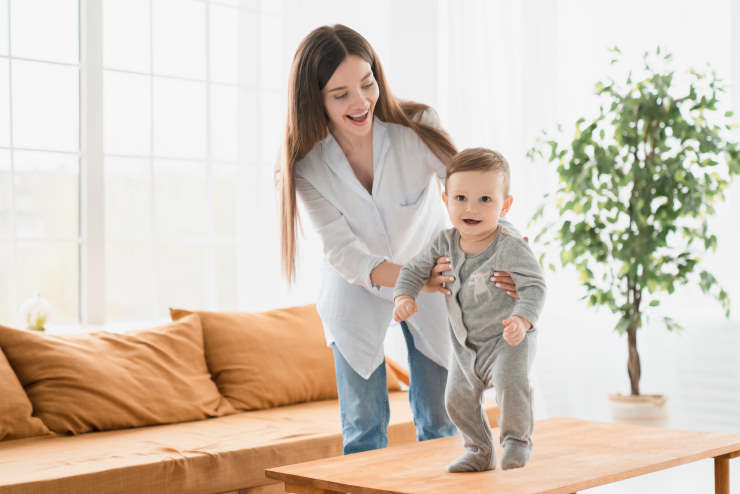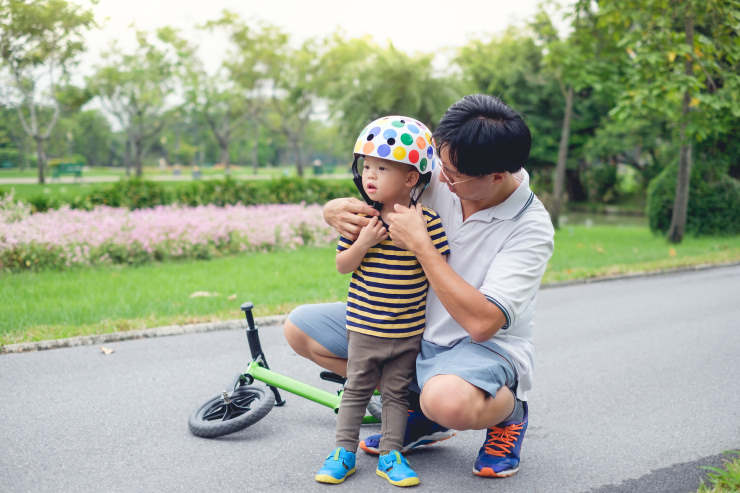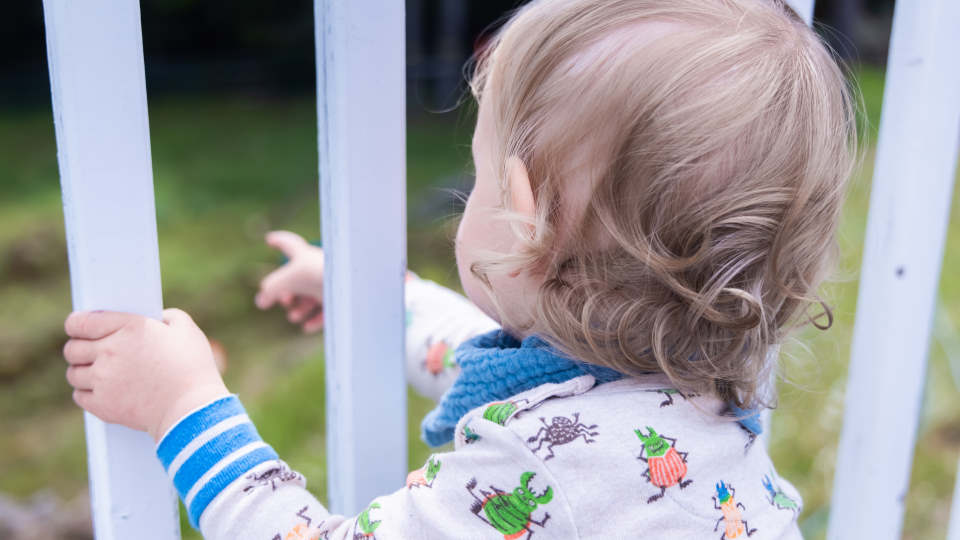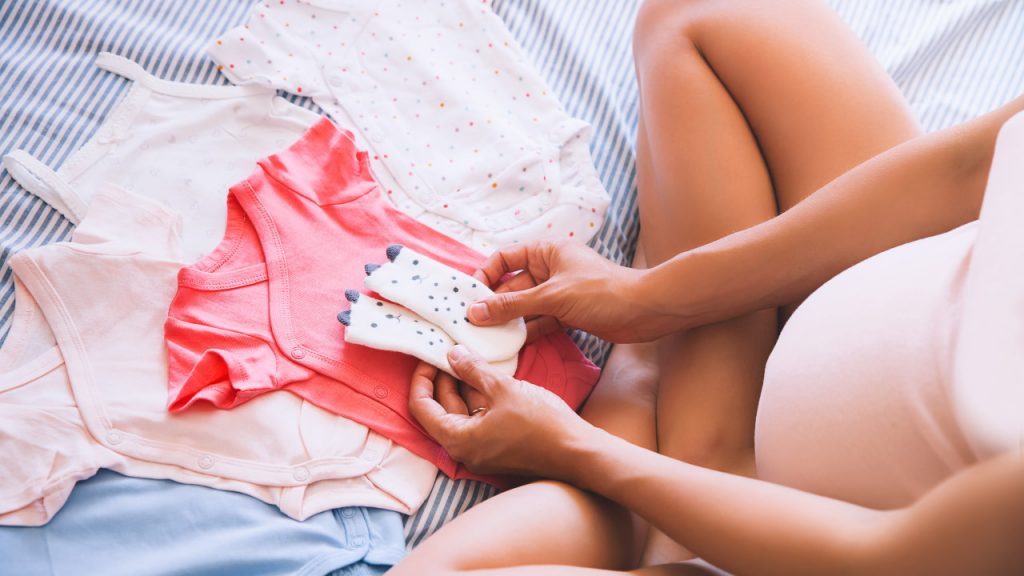Parents should be very sensitive and responsible about their toddler’s safety to guarantee their health in the first place regarding how to create a safe space for toddlers. Especially in the toddler age, which is one of the most critical points of the growth phase in terms of mobility, children are very active because they feel much freer than before.
Unfortunately, this can drag them into much more dangerous situations. In this case, along with the security measures provided in their home, which will be one of the safest points of the toddlers’ lives, there are issues that their parents should be aware of.
As they ensure the safety of their children, they should also be able to make them responsible individuals within the framework of this security.
In addition to instilling self-consciousness in both themselves and their toddlers, the measures provided by the cooperation of both parties will ensure the safety of both families and children.
In addition, families also need to know what kinds of accidents occur frequently and to approach this issue carefully and cautiously. A parent who does not know what to do and how to behave in case of an accident will face severe consequences for their child’s health.

What Are Three Ways to Keep Toddlers Safe?
1. Teach Your Child Self-Defence from a Young Age
Firstly, be aware that your toddlers need to protect their identities and bodies at an early age. In any case, it is a must for your children to ensure their safety in the absence of their parents. In that case, as a first rule, you should teach your child to know and to defend himself by establishing boundaries against harmful factors around his persona.
In the context of how to create a safe space for toddlers, they should be given advocacy training that secluded places where they will be alone are not secure and that they should not interact with anyone other than people they don’t know. They should be taught not to accept any offer and not to be spoken to by strangers without their parent’s permission. Additionally, they should be aware of what could be dangerous for them or harm them.
2. Let Your Children Know You by Cooperating with Them
After letting them know themselves, you should allow your toddlers to know and trust you. That is to say; if you display an overly oppressive and normative attitude towards your children, they will start to act in the opposite direction of what you say, as they do not have sympathy and empathy towards you.
When you cooperate with them as you open yourself up to your toddlers, they will get along much better with you, mentally developed to understand why and how you think about their safety; thus, they will be alert to dangers eventually.

3. Never Leave Your Children Alone and Supervise Them Actively
Since children are spontaneous individuals by nature, it is unfortunately not entirely possible for parents to predict where and how the danger will come. For this reason, as one of the most important actions for your toddlers’ safety, you should never leave them alone and always observe them.
What Are Ten Safety Rules at Home?
1. Support Your Home with Safety Devices
Support your home by using today’s technology in many areas, from the fire alarm to a security lock or child monitors to auto locks.
2. Fasten up Your Furniture
Keep your furniture fixed to the wall to prevent serious injuries such as furniture falling on your toddler while climbing or many other active actions.
3. Hide Sharp and Dangerous Items
All kinds of dangerous tools, like sharp or burning items, should be removed and stored in the vicinity or at points out of your child’s reach.
4. Keep Doors and Windows Locked
Ensure that the doors and windows of your house opening to unsuitable and dangerous rooms and points such as basements, high balconies, and window sides are locked.
5. Be Careful about the Technology
Be careful about the technological devices causing serious problems like an electric shock and excessive radiation, light, and sound exposition, no matter how it has provided many conveniences and security in our age.

6. Kitchen and Food Safety
Pay attention to what your child eats and what he should not eat. Therefore, you should never leave them alone in dangerous areas like the kitchen, a place where your child will face dangers like poisoning.
7. Never Leave Your Children Alone with the water
Just like the kitchen, the bathroom is an area where you should not leave your toddler alone so that he won’t face danger like drowning, as it contains water.
8. Bedroom and Nursery Safety Tips
Be careful about the bedrooms with drawers where your toddlers can lock themselves. Plus, consider your child’s body proportion while choosing the beds in the nursery.
9. Know What Your Child Is Playing With
Make sure your children play with toys that are age-appropriate and not dangerous. Watch out for toys with small parts that can be swallowed or sharp surfaces.
10. Create a Fun and Secure Playground
Try to create play areas supported with suitable items where your child can be safe while having fun.
Should I Let My Toddler Fall?
Children are curious adventurers by nature and need to experience many new things during their developmental age. So, yes, this includes falling! But, just as an adult needs to experience something to learn it well, toddlers need to know something by experiencing it to a certain degree.
In case of minor stumbles and falls that will not lead to serious and dangerous consequences, your child should still be under your supervision but should learn to stand up without any intervention. In this context, he will learn what to do to avoid falling again or how to stand up even if he falls. This means that letting your child fall enables them to gain responsibility.

Logically speaking, it’s about allowing your child to make minor mistakes under your supervision. In this way, he will learn from his mistakes, and in this context, he will move towards gaining his responsibility.
So much so that falling also plays a vital role in strengthening toddlers’ perception and reflexes. Even if not in the same place, at other times and points, your child will try not to fall again with her perceptions and reflexes. This will trigger motor learning as well as mental.
Moreover, it has been proven that there is a positive development in emotional processes such as anger control, thanks to the sense of responsibility that falling provides to children.
Of course, as parents, it is necessary to keep toddlers under surveillance, considering the serious blows that may come to a head. In these cases, it is essential to prevent and intervene in any dangerous fall.
Eventually, falling and getting up is like playing around. Your child can learn and have fun from his mistakes due to small falls!

How Do Nurseries Prevent Falls?
- Supervising: As mentioned earlier, the primary responsibility of parents or persons responsible for children is to supervise. In this way, a human factor will have preceded the danger before all other supported security measures, and thus the danger will already be averted.
- Child’s Awareness: After good observation, your child’s awareness again is a factor that will reduce the risk of falling and other dangerous situations. In addition to high and dangerous points, the pre-education to be given to toddlers about falls ensures that your child knows what to do when it happens and prevents the fall beforehand. In short, your child needs to be conscious.
- Safety Gates: Safety gates installed around stairs, balconies, or high platforms will be an essential security measure for families with children and nurseries.
- Placement: In addition to guards, you should avoid placing toys-like items that will attract your child’s attention on high points such as windowsills and balconies. Beds or armchairs on which toddlers can easily climb should not be located near such areas.
- Soft Landing Surface: The soft ground areas provided in the playgrounds prevent children from being harmed in cases such as falling. Thus, it keeps the child safe.
- Secure Equipment: Depending on the areas where toddlers play, using protective accessories such as knee and elbow pads or wrist guards and helmets will reduce the danger of inevitable falls like falling from bikes or trampolines and protect your child from serious injury.
- The Furniture: In addition to high areas, items that will increase the risk of falling for toddlers at a stage where kinetic movements such as walking should be removed on a normal height floor. For example, furniture like carpets or rugs that may cause your child to slip on the floor and cables or ropes that may cause them to trip and fall should not be under your child’s feet.

What Are the Most Common Accidents in A Nursery?
- Falls: Due to their active and playful nature, falls are prevalent in the most common accidents involving children. Amid the hustle and bustle, tripping or slipping is quite common among toddlers in the nursery when playing a game or even during an ordinary walk.
- Fires: Children can have quite innovative and curious personalities. In this context, they can interact with many fire-containing items such as lighters, matches, stoves, and fireplaces to satisfy their curiosity about new things. Unfortunately, as a result of insufficient security measures, fires can be caused as risky.
- Scalds and Burns: Among the main risks of hot water or food, accidents causing scalds and burns in toddlers are quite common. This is risky for children exposed to burns from hot liquids and food unless care is taken. In addition, as mentioned above, burns may occur when toddlers are in direct contact with fire, leading to life-threatening dangers.
- Poisoning: Children who have food poisoning due to careless parents are also in danger because of drug/medicine or cosmetic product poisoning. In addition to medicines that should be kept out of the reach of toddlers, cleaning products containing detergent, soap, or bleach, and many chemical substances are not kept with child locks, and children may be faced with fatal poisoning.
- Suffocating and Choking: As mentioned above, toys with small pieces are very dangerous for toddlers and cause choking in cases such as swallowing. In addition, meals that do not contain small and granular parts that are suitable for your child’s nutrition program and eating situation prevent dangers such as choking. However, if they are not properly supervised and these conditions are not met, children often face the danger of suffocation.
- Drowning: Because toddlers are not born able to swim and have small bodies, they are at risk of drowning when left alone in places such as pools, bathtubs, or the sea.

Conclusion
Ultimately, child safety is an issue that cannot be taken lightly and has vital consequences on how to create a safe place for toddlers. In the context of this issue, families must know what kind of security measures they should take and raise their awareness by educating their toddlers on this issue clearly and unequivocally.
Moreover, conscious children will be able to avoid many dangers in the future thanks to the bond and cooperation they establish with their conscious parents. They will also gain experience in their mistakes and will be one step ahead.
To clarify and answer the question of how to create a safe space for toddlers, parents make a small checklist about their house being safe. They need backup support from technological safety devices and be cautious about the technology. It is also essential to equip the home safely and make it a place of comfort.
In addition, parents, who should be careful and conscious of external factors, will be able to provide a safe living space for their children as a result of this, and they will also avoid dangerous accidents that occur frequently.



